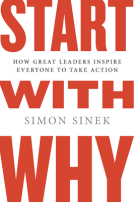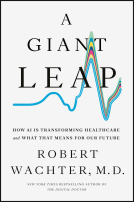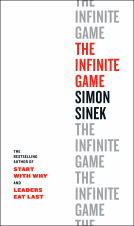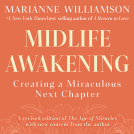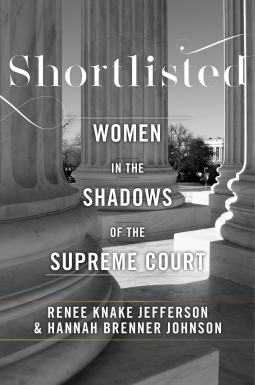
Shortlisted
Women in the Shadows of the Supreme Court
by Hannah Brenner Johnson; Renee Knake Jefferson
This title was previously available on NetGalley and is now archived.
Send NetGalley books directly to your Kindle or Kindle app
1
To read on a Kindle or Kindle app, please add kindle@netgalley.com as an approved email address to receive files in your Amazon account. Click here for step-by-step instructions.
2
Also find your Kindle email address within your Amazon account, and enter it here.
Pub Date May 12 2020 | Archive Date Aug 24 2020
Talking about this book? Use #Shortlisted #NetGalley. More hashtag tips!
Description
Winner, Next Generation Indie Book Awards - Women's Nonfiction
Best Book of 2020, National Law Journal
The inspiring and previously untold history of the women considered—but not selected—for the US Supreme Court
In 1981, Sandra Day O’Connor became the first female justice on the United States Supreme Court after centuries of male appointments, a watershed moment in the long struggle for gender equality. Yet few know about the remarkable women considered in the decades before her triumph.
Shortlisted tells the overlooked stories of nine extraordinary women—a cohort large enough to seat the entire Supreme Court—who appeared on presidential lists dating back to the 1930s. Florence Allen, the first female judge on the highest court in Ohio, was named repeatedly in those early years. Eight more followed, including Amalya Kearse, a federal appellate judge who was the first African American woman viewed as a potential Supreme Court nominee. Award-winning scholars Renee Knake Jefferson and Hannah Brenner Johnson cleverly weave together long-forgotten materials from presidential libraries and private archives to reveal the professional and personal lives of these accomplished women.
In addition to filling a notable historical gap, the book exposes the tragedy of the shortlist. Listing and bypassing qualified female candidates creates a false appearance of diversity that preserves the status quo, a fate all too familiar for women, especially minorities. Shortlisted offers a roadmap to combat enduring bias and discrimination. It is a must-read for those seeking positions of power as well as for the powerful who select them in the legal profession and beyond.
Available Editions
| EDITION | Other Format |
| ISBN | 9781479895915 |
| PRICE | $69.00 (USD) |
| PAGES | 304 |
Links
Average rating from 10 members
Featured Reviews
 Reviewer 618858
Reviewer 618858
In 'Shortlisted', Johnson and Jefferson tells the stories of nine women who were qualified yet overlooked for a seat in the United States Supreme Court. Through these stories, they explore the ever-persisting discrimination and misogyny that exists today.
As a woman who studied law, this book filled a void I didn't realize I needed filled until I read this utterly important book. An entire book dedicated to the shortlisted sisters, the very qualified, great legal minds who struggled, fought, and almost reached the highest heights in the US legal system was just what I needed to know our history as sisters and to see the road we must yet traverse. Equality is far from won-- "There is not one magic answer to these longstanding problems, but one thing we know for sure is that it is not sufficient or even accurate to argue we should simply exercise patience."
I urge you to pick up this book to not only learn about these incredible women, but also to explore the strategies the authors put forward to move more women from shortlisted to selected.
 Barbara S, Reviewer
Barbara S, Reviewer
I picked up the book Shortlisted: Women in the Shadows of the Supreme Court because I wanted to know more about the women who ostensibly had a chance to be a Supreme Court Justice, but were never nominated. For over half the book, my expectations were met – the stories of these women were fascinating and informative, and unfortunately disheartening. So many qualified women were passed over, and I was saddened by how much “tokenism” was involved in the process. Yet each of these stories needed to be told.
For me, the book could – and should -- have ended with the stories of those who were shortlisted contrasted with their nominated and confirmed counterparts. Instead, approximately 1/3 of the book was spent on a generalized discussion of the discrimination facing women and minorities when pursuing leadership roles. While this is a valuable topic in its own right, it veers off the topic of women shortlisted for the Supreme Court. The authors would have been better served in creating individual books on the two topics and delving into each of them a little more deeply.
Overall, Shortlisted: Women in the Shadows of the Supreme Court accomplishes what it set out to do – memorialize the narratives of the many qualified women who never made it to the Supreme Court. It contains valuable – if highly politicized – information about America’s perspective on women’s role in the judiciary, and the Supreme Court in particular. Examining the lives of these women, and the circumstances surrounding their consideration for the highest court should serve as a lesson for us all.
Note: I received an ARC of Shortlisted: Women in the Shadows of the Supreme Court from NetGalley and NYU Press. The above is my honest review.
The book did well in presenting the cases of women who were shortlisted but not selected to be part of US Supreme Court bench. It also presented few cases of those who made it to the highest court of America, namely O’Connor, Ginsburg, Sotomayor, and Kagan.
The stories are worth exploring especially in this day when the participation of women in society must be encouraged and promoted.
While the book presented the injustices and gender bias happened to many of these women, it also presented how men took part in their success.
What I wish the book could have done better is to elucidate further on how men can increasingly elevate the status of women in legal profession or the society as a whole.
The book discussed a lot about the injustices that happened. However, not enough pages were devoted to the strategies to address this. I wish it could have been longer than one chapter. I think it is time to address this issue from cultural standpoint and build the structure that will help promite equal opportunity.
Thank you NYU Press and Netgalley for the eARC!!
The first part of the book looks at the women shortlisted throughout history, specifically focusing on 11 women who were considered before the nomination of the first female Supreme Court Justice, Sandra Day O’Connor. This section was informative given that I had never heard of any of the women mentioned and the authors give a short background of feminist history to put the shortlistings into context. But it was a slow start and felt more like I was reading through Wikipedia pages for each woman, and I didn’t enjoy the book until part 2.
The second part of the book was a lot more interesting with evaluating how qualified women are tokens that are put on lists for leadership roles but ultimately passed over to maintain the status quo. The authors evaluate each woman’s experience being shortlisted and how they were portrayed in the media with regards to age, relationship status, motherhood, and physical looks.
It was also inspiring that they pointed out that although these women were in the legal profession, the issues of women and especially minority women being put into leadership roles and the criticism from the media spans across all professions. The authors also discuss how we need to do better with our feminism by including all women, not just heterosexual, cis gendered, able bodied, white women. Their calls to action were inspiring and just what I needed after what’s been happening in US politics lately.
Although the first half wasn’t the most exciting, I’m still happy to have learned about these lesser known, important women who were sadly passed over for men to serve on the Supreme Court. In the words of the authors, Just think where we would be in terms of equality if we had put women on the Court sooner?
Rating: 4/5 stars
 Reviewer 602942
Reviewer 602942
Nominated by Ronald Reagan and approved by the US Congress, Sandra Day O'Connor in 1981 became the first female justice to serve on the US Supreme Court. Her appointment seemingly signaled the breaking of a glass ceiling for all women. But, as the authors of Shortlisted show, her appointment, although historic, was in fact a case of tokenism, allowing President Reagan to claim that he had done much to advance the cause of women when in reality under his watch there were significantly fewer women and minorities appointed as judges than under his predecessor.. This insightful and well-researched study exposes not only how tokenism masquerades as change but also how so-called shortlisting allows government officials and companies to claim greater diversity in hiring than exists. This story of maintaining the status quo is demonstrated through the lives of women who have been shortlisted for the Supreme Court as early as the 1930s, but who were not appointed. These women included: Florence Allen, Mildred Lillie, Amalya Lyle Kearse, Cornelia Kennedy, Sylvia Bacon, and Soia Mentschikoff, and Barbara Rintala. Although these women paved the way for those who would later be appointed, their amazing accomplishments in a male-dominated world have seldom been told and this book reclaims their history. For this, it should be commended.
Also commendable is the authors' analysis of how mainstream media, including so-called left-leaning publications such as The New York Times and The Washington Post, to this day employ a different standard in covering female and male professionals. For example, newspapers do not comment on male nominees’ domestic abilities or lack thereof, nor do they comment on their physical appearance. Yet both Justices Kagan and Sotomayor were critiqued by these publications for being childless and overweight! Beyond these obviously misogynistic comments, women have also been held to a different professional standard, needing to have significantly more professional experience than their male counterparts to be considered equal. For example, Kagan was criticized in the media for her lack of trial experience, yet some previous male justices also lacked trial experience, including William Rehnquist. In fact, some previous male appointees did not even have law degrees! Their experiences, the authors show, are indicative of the continuing double-standard against which women must struggle. This double standard is further illustrated through an analysis of the 2018 Kavanaugh confirmation hearings and Trump's shortlists, which have functioned the exact same way as earlier shortlists, that is, giving the appearance of diversity and equality to the nomination process, while in reality maintaining the status quo. Thus, despite the Me-Too Era, women continue to encounter significant barriers in the professional world.
My one critique of the book is that its organization into two parts—one presenting the biographies of the women and one using their lives to illustrate the harm of shortlisting and tokenism—results in significant repetition of information that at times detracts from what is otherwise a compelling narrative of a century-long battle by women to achieve equal representation in the field of law.
 Cory G, Reviewer
Cory G, Reviewer
Female Supreme Court Justices are famous, even cult figures like RGB, but the nearly-women that were shortlisted but not nominated to the Court were relatively unknown until now. This book traces the history of women shortlisted for a Supreme Court seat and offers a brief biographical sketch of each and also takes a larger look at the effects of this shortlisting.
Readers who liked this book also liked:
John Kotter; Holger Rathgeber
Business, Leadership, Finance, Nonfiction (Adult)
Marie Bostwick
Historical Fiction, Literary Fiction, Women's Fiction



